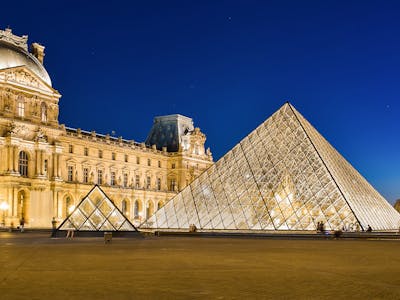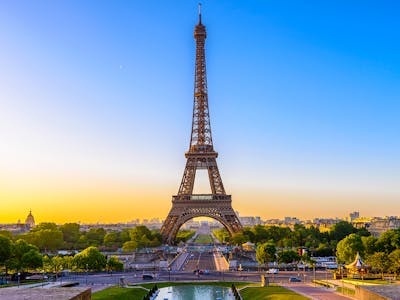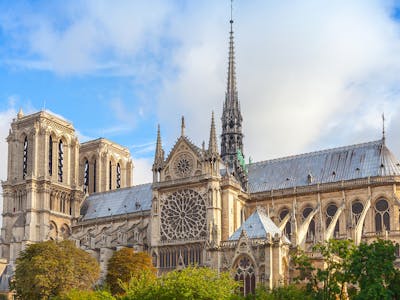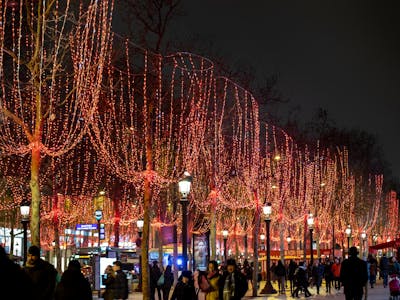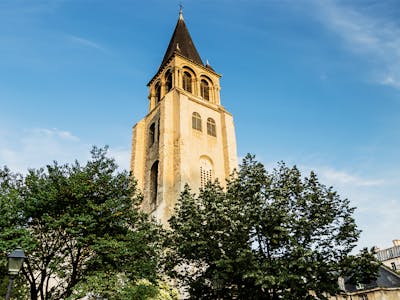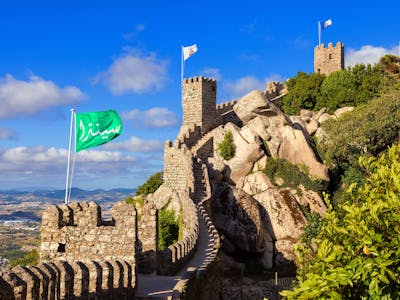A new-age architectural masterpiece which houses over 100,000 pieces of art, including the Musée National d’Art Moderne Centre Pompidou is often considered to be a shrine dedicated to modern art. Ever since its inauguration in 1977, Centre Pompidou has solidified itself in the art world, and is world famous for its exhibitions, dance performances, cinemas and artifacts. Whether you’re into the world or not, this museum is a place you have to visit, simply because of its high-tech architecture and incredible visual appeal.
Centre Pompidou in a Nutshell
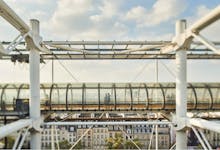
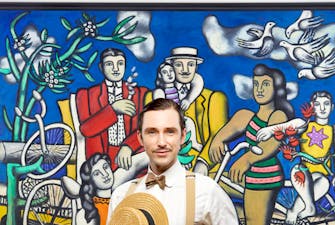

Handy Information
| 📍 Location: | Paris |
| ⏰ Suggested Duration: | 3 Hours |
| ☀️ Best Time to Visit: | 11 AM-12 PM |
| 🎟️ Centre Pompidou Tickets: | £12.82 |
Must-see at Centre Pompidou
- The Violinist at the Window
- The Fountain
- Self-Portrait in Drag by Andy Warhol
Address
Place Georges-Pompidou
75004 Paris, France
Get Directions
Opening Hours
• Sunday-Saturday: 11 AM to 9 PM
• Thursday: 11 AM to 11 PM
• Closed: Tuesday
What to Expect at Centre Pompidou
- Avant-garde Art and Exhibitions: Centre Pompidou is renowned for its extensive collection of contemporary and modern art. Visitors can expect to encounter an eclectic mix of artworks, installations, and exhibitions.
- Architectural Marvel: The iconic architecture of Centre Pompidou is a sight to behold. Designed by Renzo Piano and Richard Rogers, the building features an unconventional, inside-out design, with exposed colorful pipes and escalators running up the exterior.
- Panoramic Views of Paris: Centre Pompidou offers breathtaking panoramic views of Paris from its rooftop terrace. As you ascend to the top, you'll be rewarded with stunning vistas that encompass the city's iconic landmarks, such as the Eiffel Tower, Notre-Dame Cathedral, and Montmartre.
- Vibrant Cultural Hub: Centre Pompidou is not just a museum but a vibrant cultural hub that hosts an array of events, performances, and screenings. From live music and dance performances to film screenings and literary gatherings, there's always something happening at Centre Pompidou.
Recommended Centre Pompidou Tickets
Centre Pompidou History
Designed as a visionary architectural project in the 1970s, Centre Pompidou opened its doors in 1977 as a symbol of the former French president Georges Pompidou's commitment to innovation, experimentation, and interdisciplinarity. The colorful exterior facades, high-tech infrastructure, and controversial design generated immense global attention, catapulting it to become one of the most visited cultural landmarks in Europe and the world. Centre Pompidou was the first major example of "inside-out" architecture, with its structural system, mechanical systems, and circulation exposed on the exterior of the building. From its inception, Centre Pompidou has been a hub for contemporary art, performance, film, literature, and cultural discourse. Its vast collection of modern and contemporary art, including works by Picasso and Kandinsky, represents a broad and inclusive range of aesthetic traditions that continue to inspire and shape the global art world.
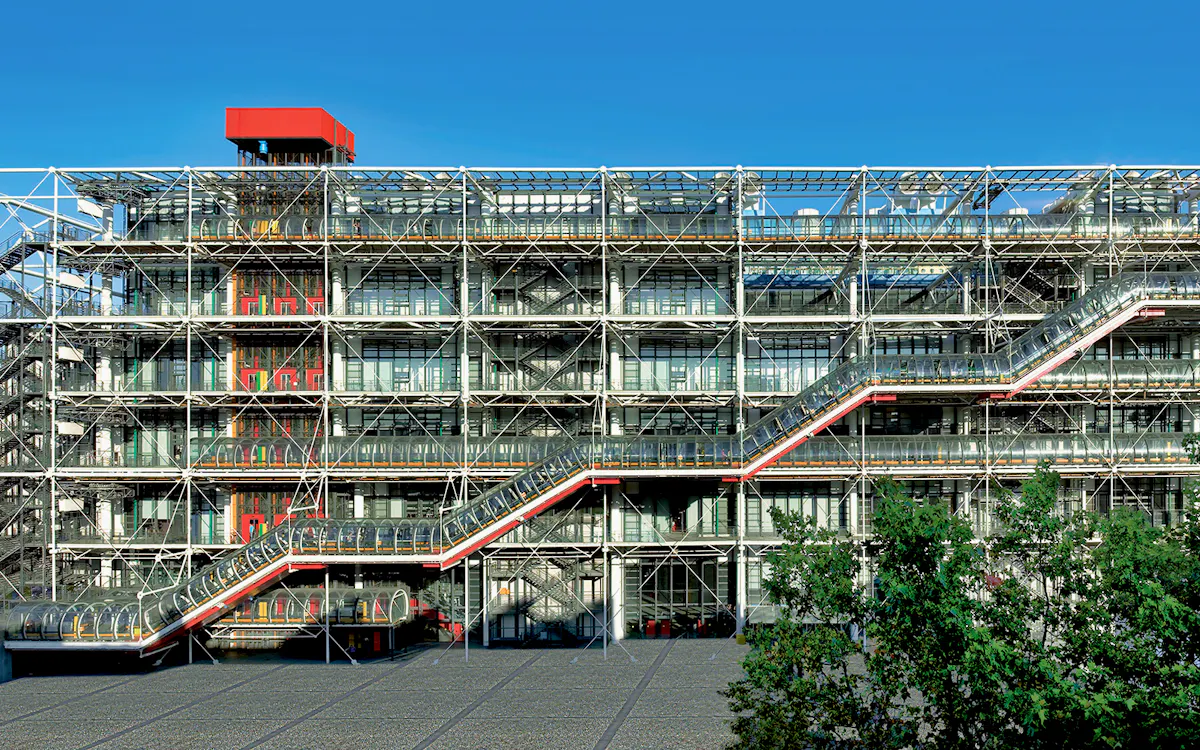
Centre Pompidou Architecture
Centre Pompidou is an ultra-contemporary artistic hub. And such a space, needs a brilliant design with zero clutter. It is with this intent that Renzo Piano, Richard Rogers and Gianfranco Franchini created an ‘evolving spatial diagram’. Based on this they designed the postmodern, high-tech building named after ex-French president, Georges Pompidou and spread the museum over 7 levels to cover a staggering land area of 5 acres. Nearly 15,000 tons of steel lattices went into the Centre Pompidou, along with metal frames and glass facades. The building is simply one of the most impressive sights in Paris!Designed to be fully accessible and open to the general public, upon first glance, the building looks like it’s been constructed inside-out. All the utilitarian features, including the pipes, plumbing, vents and cables are color coded and form part of the external facade, allowing the interiors to have maximum space. In fact, National Geographic proudly described Centre Pompidou as ‘Love at Second Sight’.
Top Highlights of Centre Pompidou
1The Violinist at the Window by Henri Matisse, 1918
Painted in Matisse’s signature style, The Violinist at the Window is often interpreted as a self-portrait. The theme of the painting is Music, and the painting uses a lot of elements of music iconography in its composition. In a continuity of style with the works that precede it, here he returns to the motif of the window and again uses black, though with new colours that are less heavy.
2Fountain by Marcel Duchamp, 1917
Arguably among the most famous urinal in history, the piece is viewed by many art historians and critics as a major landmark in 20th century art. Photographed by Alfred Stieglitz, the fountain is one of the quirky hallmarks of the contemporary art world.
3Hotel by Sophie Calle, 1981-1983
Based on an autobiographical stories, Calle’s work speaks louder than a 1000 words. The Hotel is a work of art which depicts how people who rent the hotel room leave the room empty when they’re not in it. By taking the role of a house-keeping lady, Sophie Calle examined for three weeks the traces of sleep and strangers intimacy in a secret transgression.
4Self-Portrait in Drag by Andy Warhol, 1986
Andy Warhol is regarded as a pioneer of modern art forms, and his ‘Self Portrait in Drag’ series is no different. Drawing upon the worship of 1980s American stars, the polaroid series seeks to underline the performative nature of identity.
5Outgrown by Thomas Hirschhorn, 2005
One of the more recent exhibits, Outgrown is made by using recycled materials. Created by supported of DIY aesthetics, the piece seeks to nurture a conversation around social and political issues.
Best Time to Visit Centre Pompidou
If you're planning to visit the Centre Pompidou in Paris, then the best time would be during the shoulder seasons of spring and fall. The weather is mild and the crowds are manageable. The best time of day to visit is during the weekdays when it's less crowded. Don't forget to check online for any exhibitions or events happening at the museum during your visit.
Centre Pompidou Opening Hours
• Centre Pompidou is open everyday between 11 AM & 10 PM from Wednesday to Monday. The exhibition areas close by 9 PM and last admission is at 7:30 PM.
• Bibliothèque Publique d’Information is closed on Tuesdays. Monday to Friday it is open between 12 PM and 10 PM. During weekends, and on public holidays it is open between 11 AM and 10 PM.
• The Galerie des Enfants is open between 11 AM & 7 PM from Wednesday to Monday during periods when an exhibition is programmed. The Atelier des Enfants provides activities for children aged 2 to 10 every Wednesday, Saturday and Sunday, and every day during the school holidays (zone C), except Tuesdays between 3 PM & 6 PM.
• Atelier Brancusi is open between 2 PM to 6 PM from Friday to Wednesday.
• Cinema Event Schedules:- Movie: Overview of the Museum’s film collection - One Wednesday a month at 7 PM; Video and After: Meeting with artists and art historians proposing screenings, conferences and discussions - One Monday a month at 7 PM; Dance Films: A multidisciplinary approach of dance film and their rich choreographic proposal - First Thursdays of each month at 7 PM; 40 Years of Documentary Films - Second Thursday of each month at 8 PM; Cinema Prospective: Explore the film production of contemporary artists - Last Thursday of each month at 8 PM.
Getting There
• By Metro: Rambuteau (line 11), Hôtel de Ville (lines 1 and 11), Châtelet (lines 1, 4, 7, 11 and 14)
• By RER: Châtelet-les Halles (lines A, B and D)
• By Bus: 29, 38, 47, 75
• By Vélib: station no. 4020, opposite 27 Rue Quincampoix; station no. 3014, opposite 34 Rue Grenier Saint-Lazare, station no. 3010 at 46 Rue Beaubourg
• By Autolib: station at 204 Rue Saint-Martin; station at 36 Rue du Temple
• By Car: The Centre Pompidou car park entrance is at 31 Rue Beaubourg
Insider Tips to Visit Centre Pompidou
- The first thing to do at the Centre Pompidou is to head to the reception desk, and find out the list of events, exhibitions and workshops planned for the day.
- The best way to explore the museum is from top to bottom. If you start your day early, you’re definitely going to bypass all the crowds at the Musee National d’Art Moderne.
- Visiting either in the morning or later in the evening is preferred to escape long lines. Reach at least half an hour before the opening time.
- All tickets to the Centre Pompidou include admission to the rooftop. Be sure to make your way to the top for stunning views of Paris.
- The Pompidou Plaza always has street performers including mimes, jugglers, clowns and during Spring hosts miniature carnivals. Be sure to keep an eye out for this on your visit to the Centre Pompidou.
- A key attraction near the vicinity of the Centre Pompidou is the Stravinsky Fountain. Located towards the south side of the centre, the fountain is a mechanical artwork featuring skeletons, hearts, clefs, and ruby-red lips.
- Another place you have to check out, is the wall at the corner of Rue Clairvaux and Passage Brantome. Over here lies a bizzare mechanical brass-and-steel clock called Le Defenseur du Temps.
- Cameras and other recording equipment is not allowed at the museum space. If you’re planning to carry equipment, chances are you’re not going to be able to use it. However, cloakrooms are available at the venue which stay open between 11 AM and 9:50 PM.
- Planning a romantic evening at the rooftop restaurant ‘Georges’? Be sure to reserve a table in advance.
- If you want to spend no money on your visit to the museum then keep an eye out on the first Sunday of each month. Admission to the museum is free on these days.
Restaurants Near Centre Pompidou
Georges, located on the rooftop of Centre Pompidou, offers a stylish dining experience with a terrace boasting stunning views of the Eiffel Tower. This restaurant delights patrons with local cuisine, accompanied by a diverse selection of wines. It's the perfect spot to savor delicious food while enjoying the iconic Parisian skyline.
Indulge in a delightful culinary experience at this casual Syrian eatery, catering to shawarma lovers. Savor the flavors of meze platters, succulent meat grills, and falafel wraps paired with crispy fries and refreshing salads. It's the perfect spot to satisfy your cravings for Middle Eastern cuisine.
Hanoi is a small and elegant eatery in which you can savor Vietnamese classics like spring rolls and pho. The menu also offers a variety of vegan options, catering to different dietary preferences. Enjoy the flavors of Vietnam in a cozy setting with delicious, authentic dishes.
Places to Stay Near Centre Pompidou
Mid-range Stays
Economy Stays
Things to Do Near Centre Pompidou
FAQs
The Centre Pompidou, designed by Renzo Piano and Richard Rogers, is a 20th-century architectural marvel, immediately recognizable by its exterior escalators and enormous coloured tubing. It is home to the National Museum of Modern Art and is internationally renowned for its 20th and 21st century art collections.
The Centre Pompidou is the perfect place to spend the afternoon with your family. The multiple offers of activities for children and adults will satisfy everyone in the family. The art museum is impressive, easy to access, making it perfect for art lovers.
The Centre Pompidou-Metz displays unique, temporary exhibitions from the collection of the Musée National d'Art Moderne, which is not on display at the main Parisian museum. Since its inauguration, the institution has become the most visited cultural venue in France outside Paris, accommodating 550,000 visitors/year.
Centre Pompidou ticket costs 14 € (US$ 15.50) for adults. Entry is free for visitors aged under 18 years old, EU citizens aged under 26 years old, and disabled visitors.
Pompidou meaning in French. Just so you know more than Franck and Chloe, the name Pompidou is the name of a French President, Georges Pompidou (1969-1974). It means "someone who is from Pompidou", a location in the South-East of France.


